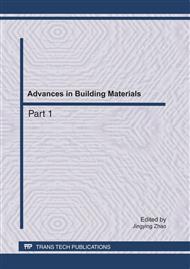p.1178
p.1182
p.1191
p.1196
p.1201
p.1206
p.1210
p.1215
p.1220
Experimental Research on Rheological Properties of Cemented Mortar in Tail Void Grouting of Shield Tunnel
Abstract:
Grout flow pattern and rheological parameters determine grouting pressure transfer process in annular tail void and filling rate for shield tail void. However, cemented mortar is a mixture of cement, fly ash, sand, bentonite and water, which lead to grout rheological properties and rheological parameters are difficultly determined. Based on orthogonal experimental design method, grout rheological properties were tested by rotational viscometer. Utilizing variance and poly-nonlinear regression analysis, the qualitative and quantitative relationships between mix ratios and rheological parameters were obtained respectively. It is shown that cemented mortar flow pattern commonly agree with Bingham fluid type, and plastic viscosity varies between 1 and 4Pa•s, and shear yield stress varies between 10 to 40Pa respectively. Water-binder ratio and bentonite-water ratio are key influencing factors for grout rheological parameters. With the water-binder ratio increasing and bentonite-water ratio decreasing, plastic viscosity and shear yield stress present reducing tendency.
Info:
Periodical:
Pages:
1201-1205
Citation:
Online since:
May 2011
Authors:
Price:
Сopyright:
© 2011 Trans Tech Publications Ltd. All Rights Reserved
Share:
Citation:


